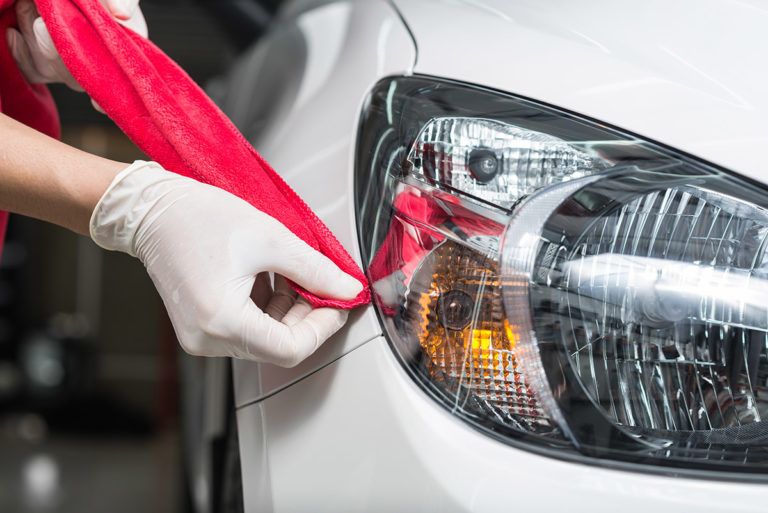Cleaning Car Trim
Because cars are so rarely covered in a smooth, seamless exterior, it can be tricky to provide a consistent clean with just a hose and a sponge. Windows, bumpers, license plates, car trim…all these things can get in the way, and because they’re composed of different kinds of materials, they require different kinds of cleaning.
Most exterior car trim/molding is made of plastic. Located over the wheels, along the front or back of the vehicle, and on the top rack, these plastic pieces protected your car and make it easier to transport items. They also tend to wear down pretty fast, as they can get bleached by the sun and be more impacted by extreme temperatures.
Cleaning car trim might not seem like a top priority, but cracked, faded, or otherwise dirty trim can rapidly reduce your car’s appearance—and resale value. Next time you take your car in to a self-service car was to get cleaned, take a few minutes to ensure your car trim is also looking great.
- Wash the trim and molding every time you wash your car. There’s no need to buy a specialty cleaning product (unless you want to), since the traditional soap and water you get in your car wash will work just as well. Get in the habit of cleaning the trim each time, and you’ll avoid turning this into a chore.
- Do the trim and molding first. In order to reduce the chances of getting streaks or drips on the rest of your car’s exterior, it’s a good idea to clean the trim first and then attend to your regular wash.
- Use a special wheel brush or attend to the trim separately. Because the textured plastic of the trim will probably need a more intensive scrubbing, you should expect to work harder to get it clean. A soft-bristle brush or washing mitt and some elbow grease is the best way to get a lasting clean. For tricky roof spots, you may need a longer-handled brush.
- Apply a protective trim sealant coat. Trim needs a different coating than the rest of your car (usually a specialty rubber, vinyl, or plastic protectant, depending on what your trim is made of). This coat is used primarily to protect against UV exposure and fading. While you should always follow manufacturer instructions, you should also plan on using a small cloth and being very detailed. You don’t want it to spill or streak over onto the car’s paint.
- Pay attention to the details. The more you look, the more likely you are to find that your car is covered in small molding and trim pieces. Window and door pieces, rubber gaskets, the frame around your license plate—all these things are exposed to the same elements as the rest of your car. Take the time to attend to each one separately.
While regular cleaning and protection can ensure your car’s trim stays in good shape, you may occasionally need to darken it to return it to its former glory. Specialty products exist to tint the trim (or you can take it into an auto body shop and have it professionally done).



